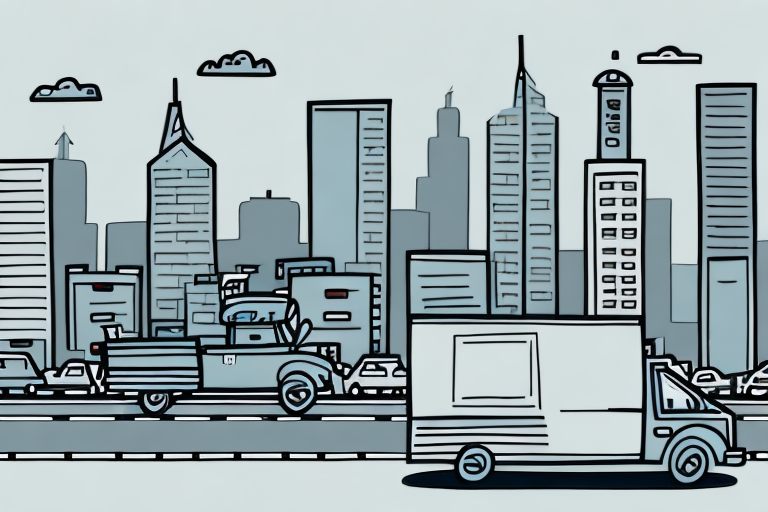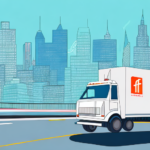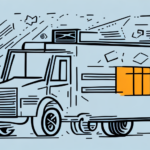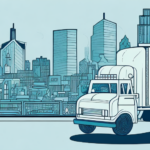Unlocking the Potential of Last Mile Logistics
Last mile logistics refers to the delivery of a product from a transportation hub to its final destination, which could be a residential or business address. Although often overlooked, last mile logistics is a critical component of a successful business operation. In this article, we will explore the importance of last mile logistics, the challenges faced by businesses in this area, as well as strategies, technologies, and best practices that can be implemented to unlock the potential of last mile logistics.
Why Last Mile Logistics is Critical for Business Success
The last mile of the supply chain is crucial for ensuring customer satisfaction and loyalty. Poor last mile logistics can lead to negative customer experiences such as late deliveries, damaged goods, and missed time windows. This can have a severe impact on a business, leading to a decline in sales, increased returns, and a loss of reputation. In contrast, efficient last mile logistics can improve customer experience, creating positive brand recognition and repeat business. This makes last mile logistics a fundamental factor in achieving long-term business success.
Furthermore, last mile logistics can also have a significant impact on a company's bottom line. Inefficient last mile delivery can result in higher transportation costs, increased labor expenses, and a higher rate of returns. On the other hand, optimizing last mile logistics can lead to cost savings, increased productivity, and improved profitability. Therefore, investing in last mile logistics is not only critical for customer satisfaction but also for the financial success of a business.
Challenges in Last Mile Delivery
Optimizing last mile delivery operations presents several challenges for businesses, including managing a dispersed network of delivery routes, unpredictable traffic or weather conditions, and ensuring the timely delivery of goods while maintaining high-quality standards. Additionally, consumers are increasingly demanding faster, more personalized, and sustainable delivery options. Addressing these challenges is key to unlocking the full potential of last mile logistics.
High Costs
One of the biggest challenges in last mile logistics is the high cost associated with it. Last mile delivery often involves smaller shipments, which can be more expensive to transport than larger shipments. Additionally, the need for specialized equipment and personnel can drive up costs. To address this challenge, businesses are exploring innovative solutions such as crowd-sourced delivery, autonomous vehicles, and drone delivery. These technologies have the potential to reduce costs and improve efficiency in last mile logistics.
Technological Innovations in Last Mile Logistics
Advancements in technology are transforming last mile logistics, making it more efficient, reliable, and sustainable. For example, route optimization software can optimize delivery routes, reducing travel time and minimizing fuel costs. Real-time tracking and monitoring technologies enable businesses to quickly address delivery issues and provide customers with more accurate delivery information. Additionally, robotics and autonomous vehicles are beginning to revolutionize the way goods are transported, reducing the need for human involvement and allowing for faster, more precise deliveries.
Drone Delivery
Drones can deliver packages directly to customers' doorsteps, bypassing traffic and reducing delivery times. This technology is particularly useful for delivering small, lightweight packages in urban areas. Companies like Amazon are actively experimenting with drone deliveries to enhance efficiency and customer satisfaction.
Electric Vehicles and Sustainable Transportation
Some companies are integrating electric bikes and scooters for last mile delivery. These are more environmentally friendly and can navigate through congested city streets more easily than traditional delivery trucks, aligning with the growing demand for sustainable delivery options.
Enhancing Customer Experience in Last Mile Delivery
Customer experience is critical in the last mile of the supply chain. To deliver a positive customer experience, businesses need to focus on providing convenience, flexibility, and transparency. Offering options such as preferred delivery times, alternative delivery locations, and multiple communication channels can significantly enhance the customer experience.
Transparency and Communication
Businesses need to be transparent about tracking information, delivery status, and potential delays. Providing real-time updates helps manage customer expectations and build trust.
Safety and Security
Prioritizing the safety and security of customers' packages during the last mile delivery can be achieved by implementing measures such as tamper-evident packaging, secure delivery options, and real-time tracking. By ensuring the safety and security of packages, businesses can build trust and loyalty, leading to repeat business and positive word-of-mouth referrals.
Strategies and Best Practices for Optimizing Last Mile Delivery
Businesses can improve last mile delivery efficiency by implementing strategies such as dynamic routing, reducing delivery lead times, consolidating deliveries, and optimizing the use of delivery vehicles. These strategies help reduce delivery costs while also improving the timeliness and quality of deliveries.
Leverage Technology
Utilizing GPS tracking to monitor delivery vehicles and optimize routes in real-time can significantly enhance efficiency. Automated delivery systems reduce the need for manual labor, while data analytics help identify patterns and trends in delivery times, allowing businesses to adjust their strategies accordingly.
Partner with Third-Party Logistics Providers (3PLs)
Collaborating with 3PL providers can offer specialized expertise and resources to optimize delivery operations. 3PLs provide access to a wider range of delivery vehicles and facilities, as well as advanced tracking and reporting capabilities, helping businesses improve delivery efficiency while reducing costs and enhancing customer satisfaction.
Case Studies
Several businesses have successfully implemented last mile delivery solutions to improve efficiency and customer experience. For example, Amazon has introduced delivery lockers in densely populated areas to provide customers with a secure and convenient delivery option. Walmart has expanded its in-store pickup options, giving customers a more flexible and faster way to receive their orders. These case studies demonstrate the importance of adopting innovative delivery solutions to unlock the full potential of last mile logistics.
Sustainability and Future Trends in Last Mile Logistics
Sustainability is becoming increasingly important to customers, and businesses need to implement sustainable practices in last mile logistics. Practices include using alternative-fueled vehicles, implementing recycling programs, and reducing package sizes. Adopting sustainable practices not only reduces environmental impact but also improves brand image and customer loyalty.
Electric Vehicles
The use of electric vehicles (EVs) is one of the most effective sustainable practices in last mile logistics. EVs produce zero emissions and can significantly reduce a company's carbon footprint. As EV technology advances, these vehicles are becoming more affordable and accessible, making them a viable option for businesses of all sizes.
Innovative Solutions
The last mile logistics industry is continuously evolving with new technologies and trends. For example, 3D printing technology could revolutionize the manufacturing and distribution of goods, while the sharing economy could create new opportunities such as shared delivery vehicles and delivery lockers. Staying up-to-date with these trends allows businesses to seize new opportunities and gain a competitive advantage.
Impact of COVID-19
The COVID-19 pandemic has had a significant impact on last mile logistics, with a surge in online ordering leading to increased delivery volumes. Businesses have responded by adopting new technologies, implementing contactless delivery options, and adjusting their delivery processes to ensure the health and safety of employees and customers.
The Role of Data Analytics in Optimizing Last Mile Delivery
Data analytics provides valuable insights into last mile logistics, enabling businesses to optimize delivery routes, identify potential bottlenecks, and predict demand. By leveraging data analytics, businesses can make data-driven decisions, enhance delivery performance, and improve customer experience.
Real-Time Performance Tracking
Data analytics allows businesses to track and monitor delivery performance in real-time, quickly identifying issues or delays and taking corrective action to ensure timely delivery.
Cost Optimization
Analyzing data on delivery routes, vehicle utilization, and fuel consumption helps businesses identify opportunities to reduce costs and improve efficiency. This can include optimizing delivery schedules, using alternative delivery methods such as drones or autonomous vehicles, and implementing more efficient packaging and handling processes.
Building a Resilient and Agile Last Mile Logistics Network
As the last mile of the supply chain becomes increasingly complex, businesses need to build a resilient and agile logistics network. This includes investing in the right technology and infrastructure, partnering with reliable carriers and logistics providers, and having contingency plans in place for unforeseen events. By building a resilient and agile logistics network, businesses can minimize disruptions and provide their customers with a consistently high level of service.
Balancing Cost and Service Level in Last Mile Delivery
A critical challenge in last mile delivery is balancing the cost of operations with the level of service required by customers. Businesses need to find a balance between cost and service level, taking into account factors such as delivery distance, speed, and customization. By implementing cost-effective strategies while maintaining a high level of service, businesses can optimize their last mile delivery operations.
Best Practices for Managing and Measuring Last Mile Delivery Performance
To optimize last mile delivery performance, businesses need to implement best practices for managing and measuring performance. This includes tracking key performance metrics such as on-time delivery rate, delivery cost per package, and customer satisfaction. Continually evaluating and adjusting last mile delivery processes ensures they align with customer needs and business objectives.
In conclusion, unlocking the potential of last mile logistics requires a strategic and holistic approach. By adopting innovative technologies and practices, implementing sustainable solutions, and prioritizing customer experience and satisfaction, businesses can optimize their last mile delivery operations and achieve long-term success.




















